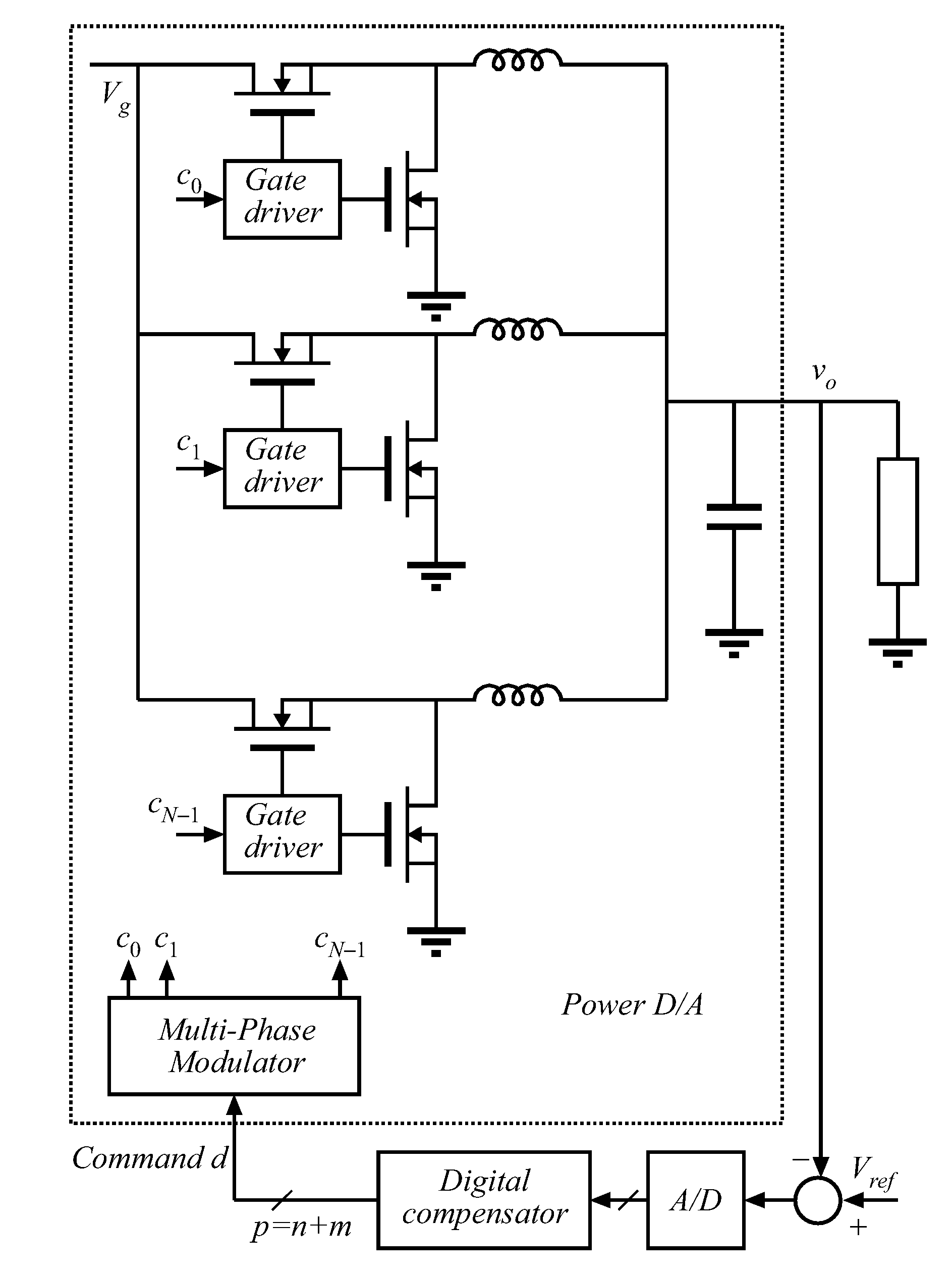Multi-phase modulator
a multi-phase modulator and phase technology, applied in the field of multi-phase modulators, can solve problems such as limiting the scalability of these approaches
- Summary
- Abstract
- Description
- Claims
- Application Information
AI Technical Summary
Benefits of technology
Problems solved by technology
Method used
Image
Examples
example
[0040]A custom IC was developed and tested based on the architecture shown in FIG. 2 for a 16 phase output, n=4, N=16. The IC was fabricated in a 0.35μ CMOS process and includes two complete versions of the digital MPM. Both versions include identical copies of the MPM core but with different types of DPWM LSB modules: counter and delay-line based. The area requirements for each of the modules and total MPM designs are shown in Table I.
TABLE ISUMMARY OF PHYSICAL AREA FOR THE TWO MPM VERSIONSAND MODULESModuleAreaCounter-based MPM0.04 mm2MPM Core0.03 mm2Counter LSB0.01 mm2Delay-line based MPM0.23 mm2MPM Core0.03 mm2Delay-line LSB0.20 mm2
[0041]The delay-line based MPM was designed for a clock signal frequency, fclock=N·fs=64 MHz, resulting in a single phase switching frequency fs=4 MHz. The delay-line LSB was designed using a digital delay-locked loop (DLL) to self-tune to the clock input with a 2:1 tuning range, as introduced in V. Yousefzadeh, T. Takayama, D. Maksimović, “Hybrid DPWM...
PUM
 Login to View More
Login to View More Abstract
Description
Claims
Application Information
 Login to View More
Login to View More - R&D
- Intellectual Property
- Life Sciences
- Materials
- Tech Scout
- Unparalleled Data Quality
- Higher Quality Content
- 60% Fewer Hallucinations
Browse by: Latest US Patents, China's latest patents, Technical Efficacy Thesaurus, Application Domain, Technology Topic, Popular Technical Reports.
© 2025 PatSnap. All rights reserved.Legal|Privacy policy|Modern Slavery Act Transparency Statement|Sitemap|About US| Contact US: help@patsnap.com



